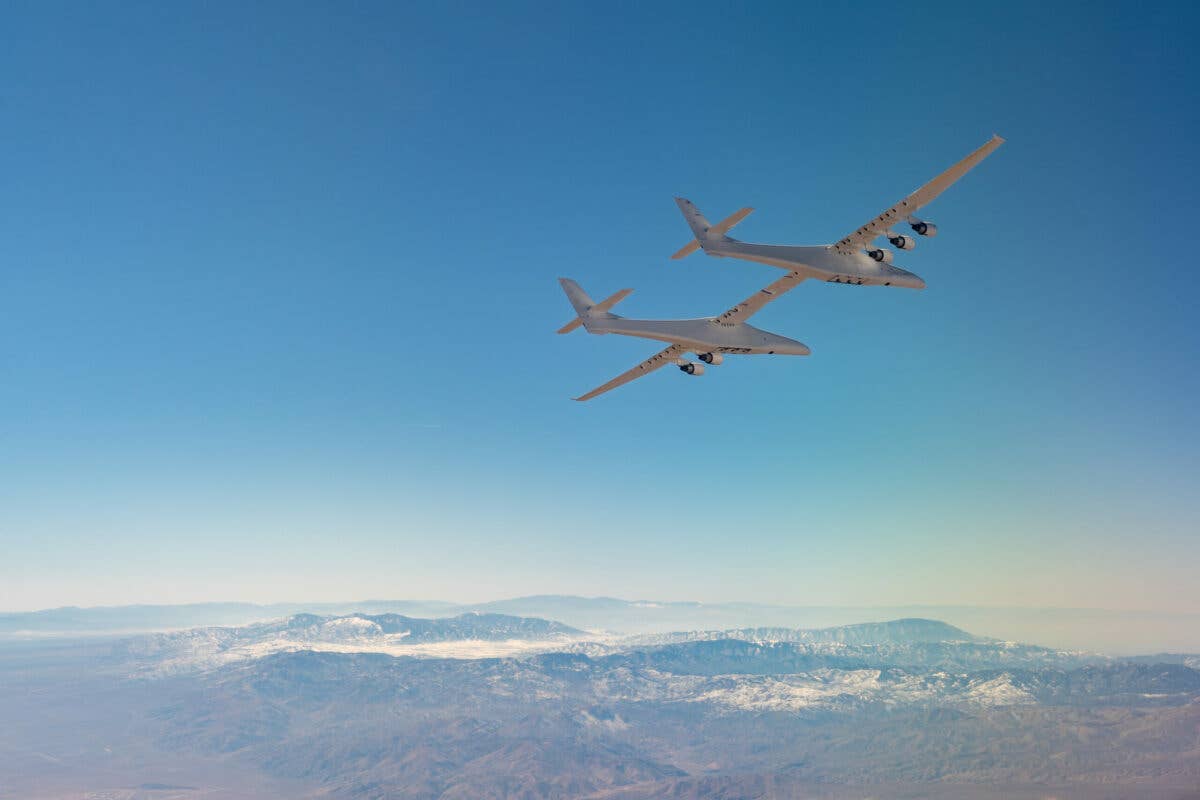A Roc Rises
Stratolaunch test flies the world’s largest airplane—by many metrics—with a view towards air-to-launch operations.

With seven missions completed as of June 16, expect more frequent test flights as Stratolaunch continues to develop and fine-tune this unprecedented airplane. Roc’s next big leap forward will demonstrate safe release and separation of a payload. [Courtesy: Stratolaunch]
After seven test flights, Stratolaunch’s Roc—the world’s largest airplane by wingspan—is well on its way to achieving operational status as an air-to-launch carrier platform.
Based at California’s Mojave Air and Space Port (KMHV), Roc is the brainchild of the late Microsoft co-founder Paul Allen. You might say the airplane is steeped in myth and legend. Its nickname was inspired by a mythical bird of Middle Eastern lore, and the airplane was designed and built by Scaled Composites—the company founded by legendary aerospace engineer and designer Burt Rutan.
Roc’s wingspan measures approximately 385 feet—longer than that of any other airplane, including Howard Hughes’s H4 Hercules, the recently destroyed Antonov An-225 Mriya, the Boeing 747-8, and the Airbus A380. To give you additional perspective, the wingspan stretches longer than an NFL football field or the orbiting International Space Station.
Since Roc’s first test flight on April 13, 2019, Scaled Model 351—as it’s officially designated—has consistently met mission goals for altitude, speed, and various systems tests.
Piloting such an unusual aircraft presents unique challenges, as you might expect. Stratolaunch test pilot and director of flight operations Evan “Ivan” Thomas tells FLYING that Roc has a very slow yaw rate that “just keeps going” and requires constant rudder inputs during turns.
“Because of Roc’s unusual Dutch-roll characteristic, you can’t just keep the rudder the same, you have to change it as you’re in the turn because 10 to 15 seconds later, instead of trying to yaw this direction, it’s trying to yaw that direction,” he says.
Roc never flies alone. A Cessna Citation Bravo chase airplane shadows it during every test flight, providing a much-needed observation platform for such a gigantic aircraft.
Although it has plenty of original components, some of Roc’s most critical systems have been salvaged from retired Boeing 747-400s, including the flight deck console, its six Pratt & Whitney model PW4056 turbofan engines, and its landing gear.
“We haven’t modified the gear in any way, but we have modified the systems and how they interact with our airframe,” Stratolaunch lead sub-systems engineer Stuart Yun says. “The original design is incredibly robust.”
Additional elements for Roc were manufactured by Textron Aviation, Gulfstream, and other OEMs.
Roc’s operations tempo is expected to increase as the company works to simultaneously develop an autonomous, hypersonic testbed vehicle. Eventually, the testbed—dubbed Talon-A—will be attached to a sophisticated carrier pylon on Roc’s center wing and launched at an altitude of about FL350.
Because this jet was designed to serve as a carrier, it comes with an especially impressive maximum take off weight (MTOW): 1.3 million pounds.
Expected to achieve operational status sometime in 2023, Stratolaunch has already contracted with the Pentagon to launch Talon-A to provide “threat replication” during planned hypersonic missile tests.

Subscribe to Our Newsletter
Get the latest FLYING stories delivered directly to your inbox






